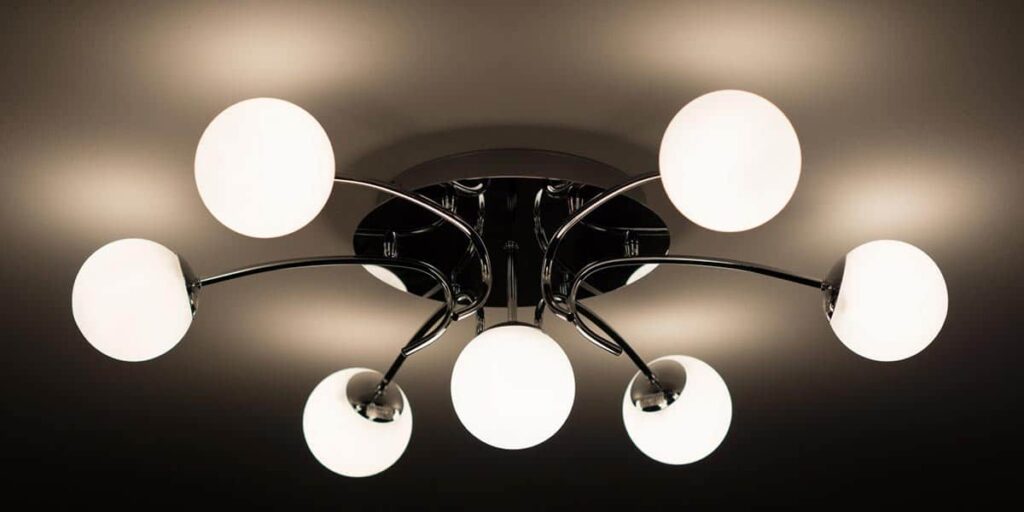Did you know that the average home has 67 lights? Since the advent of the basic lightbulb, the usage of lights has expanded into every area of our lives. It is hard to even imagine life without electricity, and light accessible in every room of our homes.
Whether you are installing a lighting system or you want to make some changes, it is important to know the different types of lighting, so you’ll be able to properly decorate your residence. Would you like to know more about the best types of lighting, and where they fit into your home design? Read on for more information on how to beautifully illuminate your home.
Recessed Lighting
Recessed lighting is one of the most popular design choices in today’s homes, and for good reason. The look is minimalist and sleek, but also provides plenty of lighting for any room. While hanging lights may make the room seem busy and distracting, recessed lighting does the exact opposite.
This type of lighting is most common in large rooms, like living areas and kitchens, where plenty of light can drastically change the mood of a room. Many types of recessed lighting have programmable settings, like the ability to adjust the dimness. If you have sensitive eyes or you want different lighting for different moods, this is a great option for your home.
If you want to install recessed lighting, you will have to decide on a trim color. The trim is the material surrounding the recessed light to hold it in place. It may be a good idea to choose a trim that coordinates with your color scheme or decor, so the lights do not stand out too much.
Chandeliers
A chandelier can make a huge statement in your home, and they are often the most elegant lighting piece in your residence. Common placement for chandeliers includes the dining area and the foyer or entrance area, where a grand accessory can make an impact.
The design of chandeliers ranges from minimalist to grand and glittering. The number of lights on the chandelier determines how bright it is, and how much of an effect it will have on the space it occupies. The crystals in the chandelier reflect the light, which is why the chandelier is brighter than many other types of lights.
Chandeliers are a great option for the dining room because they can illuminate the main focal point of the room, the table. If you want to install a chandelier at the entrance of your home, they provide guests with a beautiful visual when they first view the residence.
Under-Cabinet Lighting
Sometimes when you walk around your house late at night or you don’t want to wake people, the last thing you need to do is turn on lights so you can see. This is where under-cabinet lighting comes into play, a more modern version of the traditional night light.
These types of lights are usually installed in bars underneath kitchen and bathroom cabinets and can hook up to a special switch. They provide enough light to see and complete basic tasks but are not disruptive. They also have a great aesthetic appeal.
Under-cabinet lighting works best in the form of bars that are installed directly on the underside of the structure that you want to light. This type of lighting is a great option for people who have kids, as it can provide a way for children to navigate around at night without getting hurt or having an accident.
Vanity Lights
Vanity lights are one of the most well-known types of lighting. Harkening back to old Hollywood and glamour, they still remain a hugely popular option for consumers. They look best in bathrooms and bedrooms, to illuminate the face in a flattering way.
Traditional vanity lights are made with regular lightbulbs, arranged in a square or rectangular shape around a mirror. However, sometimes that design can be too intense for a small bathroom or bedroom, so less illumination may be the trick to toning it down a bit.
Some modern vanity lights include three or four lights arranged over a bathroom mirror. They still provide the same effect, but with less brightness and less power used overall. Usually, these types of lights look best over a medicine cabinet, so make sure that their width matches that of the cabinet for a streamlined effect.
Outdoor Lighting
When customers think about the lighting systems for their homes, they sometimes forget that outdoor lighting can actually make or break a design. It is vital that your outdoor lighting serves its purpose and reflect your sense of style, whether it matches the indoor space or creates a whole new concept.
Outdoor lighting can range from landscape lighting to patio lighting. If you have an impressive landscaping display that you would like to be illuminated at all times, then you may want to consider landscape lights. These lights can line pathways in stylish lantern designs, or nestled among your plants and flowers.
If you have a patio or outdoor deck area, string lights are a popular choice. They provide consistent illumination but are not bright enough to be distracting. String lights can also be easily installed, as they usually require simply hanging a few screws or nails and draping them from corner to corner.
Garage Lighting
Picking out garage lights should be one of the easiest decisions for your home, depending on how you utilize the space. Most standard garage lights take the form of energy-efficient bar lights that hang in panels in the ceiling of the garage.
You will want garage lighting to be bright but also long-lasting and resistant to damage. Most of the bar lights installed in modern garages are LED or fluorescent. If you like to work on your car or do other hardware tasks in the garage, bright and widespread light is your best choice.
If you only use part of the garage as a workspace and want to light that area specifically, then you can also install smaller lights that have the settings your work requires. With its open design, a garage provides plenty of room for customization and putting in as many lights as you would like.
Personal Lights
When choosing lights for individual bedrooms in your home, you should always consider the needs of the person living there. Often, personal lighting should be highly customizable based on how much the resident uses the light and what they use it for.
If you live somewhere that has hot summers, it might be a good idea to install ceiling fan lights in the bedrooms to cut down on your power bill during the warmer months. Fans are great because each user can set the fan to their cooling preferences, so there are no arguments about the temperature of the house.
For smaller children, sometimes having a night light is essential for a good night’s sleep. However, they should only be used as little as possible, as night lights have been shown to stop melatonin production in the brain. Make sure the night light will ease your child’s worries, but will also be dim enough not to disrupt their sleep.
For adults, lights for the night table or personal reading lamps can be a great accessory and a good way to help wind down for the night. Using a smaller light once you are ready for bed will help to avoid the hassle of getting out of bed to turn off a light switch. You can simply turn off your personal lamp and go to bed.
Stair and Hallway Lighting
Similar to under-cabinet lighting, one of the modern lighting trends is floor lighting in stairs and hallways. This provides a warm look to the home and is also incredibly helpful for all residents.
Stair lighting can be placed on the wall beside some of the stair steps, to illuminate them in a way that does not create too bright of a light. To save on energy, you can even purchase stair lighting that is motion-sensitive, so it does not illuminate until movement is detected.
Most hallway lighting is recessed, but for a better nighttime view, you can apply the same concept to areas that are used frequently during the night. Consider installing the low hallway lighting in places like in between the bedroom and the bathroom, or on the way to the kitchen, so you do not need to turn brighter lights on to reach your destination.
Customize Your Home With All Types of Lighting
If you are thinking about changing up the lighting in your home, now is the perfect time to look at your options and start the planning process. Once you decide the look or aesthetic you want, you can begin to pick out the lighting system for your space.
Want to know more about types of lighting and how to choose the perfect lights for your home? Contact us today to talk to an expert or schedule an appointment.


